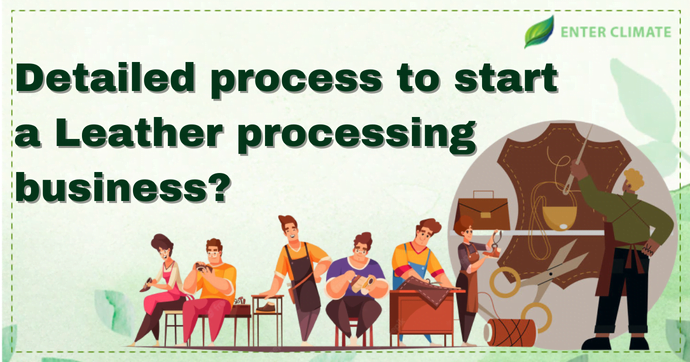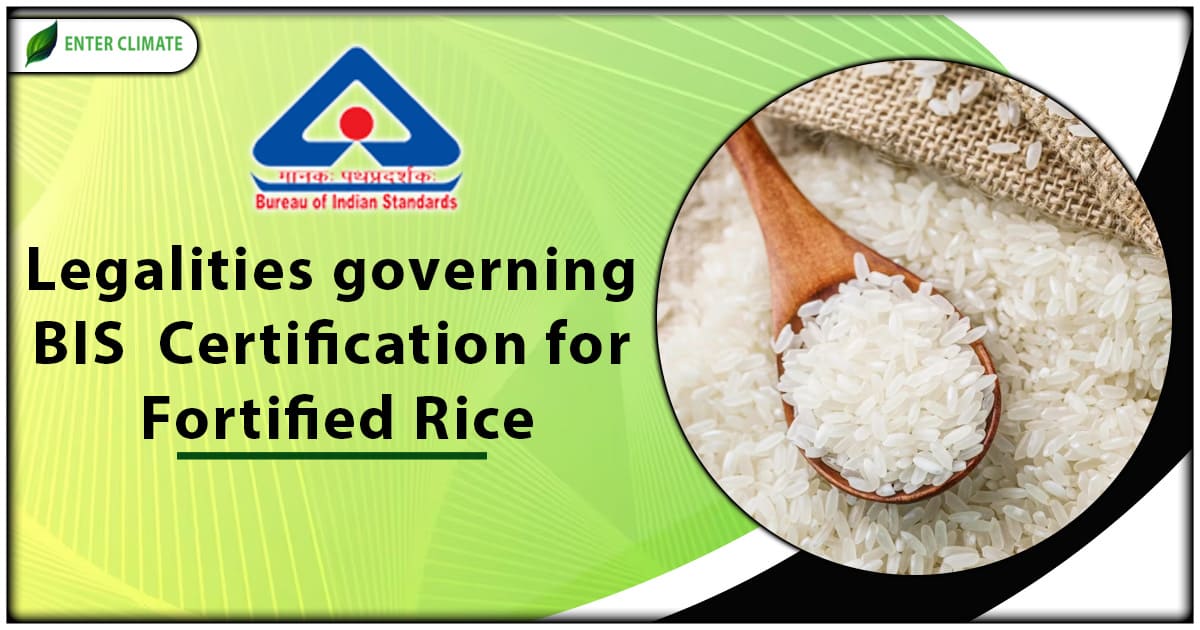Detailed process to start a leather processing business?
 27 Dec, 2022
27 Dec, 2022 
In the leather business, one can either manufacture and process leather from animal hides involving several stages and thereafter the use of processed leather to manufacture leather clothing or for retail and/or the export of leather products. For the sake of the following write-up, we will be focussing on the leather processing industry. What is needed to start manufacturing or processing leather differs from what will be required as a manufacturer of leather products. The leather processing industry consists of tanneries that process leather before it can be used to manufacture a broad range of leather goods. Surface treatment, though not essential, can be added to the process sequence. The raw material used in the leather processing business is derived from the waste product of the meat industry, specifically by-products of meat processing. Continue reading the blog to find out more about how to start a leather processing business and how you can fulfil the legalities associated with this business.
Processing Operations in Manufacturing Leather
To start a leather processing business, the entrepreneur uses animal hide, the skin of bovine animals obtained from butcher houses or slaughterhouses, as a by-product. From the hide and skin markets, the raw material goes through traders to different kinds of tanneries where the actual processing happens. Here the skin is cleaned from dirt, blood, salt and hair. The transition of hide into leather requires the permanent incorporation of chemical changes into the skin’s collagen network. Traditional tanning process used vegetable tanning or E.I. tanning process. But nowadays, tanneries also use other techniques like chrome tanning, aldehyde tanning, zeolite-based tanning and integrated tanning. The process to start a leather processing business includes the following stages.
- Preparatory stage/ pertaining operations or beam house operation
- Tanning operation
- Dressing Stage (including operations such as dyeing, setting, shaving, trimming etc.).
- Finishing operations such as aniline, semi-aniline, pigment treatment etc.
Preparatory stage: The hide/skin is prepared through unhairing, soaking, liming, fleshing, splitting, preservation, deliming, reliming, bating, degreasing, bleaching, pickling, and depickling.
Tanning: At the end of beam house operations, the main component of the skin is structured collagen, which must be transformed into leather after stabilising the protein. Once the hide is tanned, properties like resistance to putrefaction (even in wet conditions) are infused into the material.
Dressing: the process is used to neutralise, re-tan and lubricate leather. It often includes a colouring operation. Chemicals added during crusting must be fixed in place. Crusting culminates with a drying and softening process.
Finishing Operation: Finishing operations can include oiling, brushing, padding, impregnation, buffing etc., to specific leather products. It is done to minimise the appearance of grain blemishes without losing the natural beauty of the leather product and give the required degree of gloss. This also makes the leather soft, malleable and mouldable and provides a surface that can be easily cleaned.
Advantages of Setting up the Leather Processing Business
Leather is one of the most traded and exported products in India. The advantages associated with the business include
Continuous modernisation and technology up-gradation: Indian leather has massive demand in the international market too, and therefore the industry is constantly modernising to match global standards. The major markets for leather and footwear products include the USA, U.K, Italy, Germany, France, Spain, U.A.E, China, Hong Kong, Belgium, Netherlands and Poland.
Demand for leather products: The Indian leather footwear industry country accounts for 9% of the world’s footwear production and is the second largest footwear producer and consumer. Indian Footwear Market was valued at USD 9.70 billion in 2019, and the sector has the potential to grow to $80 Billion by 2030. India is the 2nd largest exporter of leather garments and the fifth-largest exporter of leather goods and accessories worldwide.
The growing domestic market for footwear and leather articles: Leather is used as fabric, covering, clothing, or surface finishing. It is often used to manufacture clothing, including pants, skirts, raincoats, and jackets. Fashionable footwear is one of the most common uses for leather, including shoes, slippers, boots and more.
Incentives by the Government: The Central Government introduced the Indian Footwear and Leather Development Programme’ (IFLDP) scheme with an allocation of ₹1700 crore till March 31, 2026. This scheme had the following sub-schemes
- Sustainable Technology and Environmental Promotion
- Establishment of Institutional Facilities
- Integrated Development of the leather sector
- Brand Promotion of Indian Brands in the Leather and Footwear Sector
- Mega Leather Footwear and Accessories Cluster Development
- Development of Design Studios.
- Implementation of Vision document component under the ‘STEP’ sub-scheme of IFLDP.
How to start a Leather Processing Business
Before starting any business, it is essential to determine the target audience based on the product finalised. Similarly, in the leather processing industry, one must decide whether to go for B2B or B2C in the leather industry. So, it is essential to identify the customers and the market preference for the products before starting product manufacturing. In addition to deciding on the product’s location and market, finding the preferences of consumers, latest trends in the industry, demographics of the consumer, etc., must also be part of the planning. The following are the steps involved in starting a leather processing business.
STEP 1: Registration of the Business
After finalising the location and planning, the entrepreneur must decide on the form of the business, i.e. Partnership firm, Proprietorship, Company, Limited Liability Partnership (LLP)[1] etc. An application for PAN for Proprietors, Partners, Shareholders and Directors must be made. PAN can be obtained by applying online on the Income Tax Website or manually filing an application with NSDL or UTI office or Income tax Seva Kendra. Directors or Partners of LLP must get DIN (Director Identification Number) in addition to PAN. DIN can be obtained through an online application on the MCA website.
STEP 2: Applying for Licences to set up the facility
The leather processing businesses need the following licences
- GST Registration
- Factory Licence
- Consent NOC
- Fire NOC
- CGWA NOC for groundwater abstraction
- Waste Management Authorisation or tie-up with a TSDF operator for industrial waste disposal
- Register the business with MSME
- BIS Registration for finished leather Product
- IEC registration from DGFT in case of exports
Various other approvals are required from various State Bodies/Departments for generator installations, power connection, sewage, boilers, weighing, etc., which must be done prior to business/production commencement.
Step 3: Sourcing Machinery and Skilled Workforce
The machinery to start a leather processing business can be procured domestically or can be imported. Under the scheme announced by the government, the entrepreneur is provided with various incentives and financial aid in procuring machinery. The know-how of leather processing is a crucial element in the success of this line this business. The hiring of a skilled workforce is, therefore, essential.
Market Overview and scope of Leather Processing Business
India is the fifth-largest global exporter of Leather Goods & Accessories and the third-largest exporter of saddlery and harness items. India is the 2nd largest exporter of leather garments, the third-largest exporter of saddlery and harnesses and 4th largest exporter of Leather Goods in the world. The annual availability of leathers in India is about 3 billion sq. ft. India accounts for 13% of world leather production of leathers. The Government of India identified the leather and footwear sector as one of the 12 sectors where we can be a global supplier. By increasing industry compliance with international environmental standards, introducing innovative technology, and support of allied industries, the Indian government, aims to aims to augment production, and enhance export, thereby creating additional employment opportunities in the segment.
Conclusion
With the scope of exports and the rising demand for quality leather products from domestic and international markets, one can start this business by providing quality products to gain lasting relevance. There are various options in the leather business that can serve as a startup option. Starting a leather processing business can be challenging due to the many legalities involved with the business. Stages of tanning and leather processing generate large amounts of wastewater and have been categorised as one of the most polluting industries and placed under the red list by CPCB. Therefore the business has to adhere to a series of legally mandated compliances and SOPs. Seeking guidance from industry experts to simplify and assist in the business setup formalities will speed up the process and protect the business from any legal hassle arising in the future.













